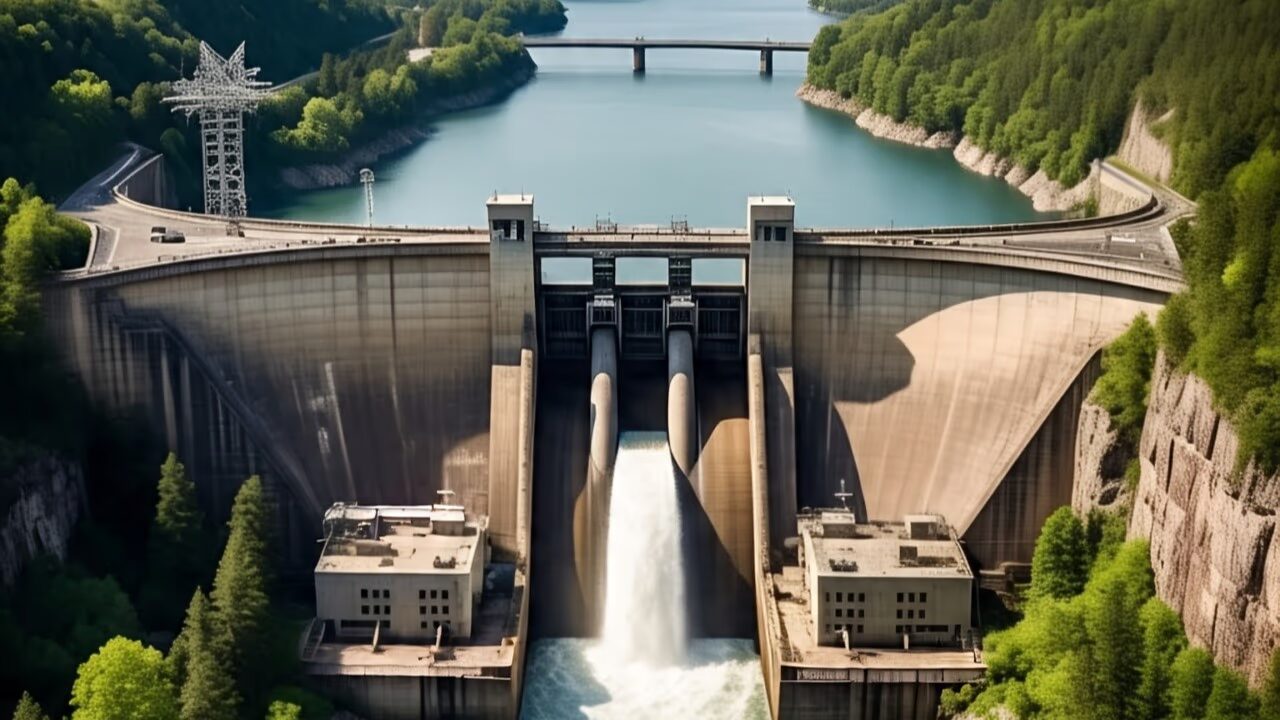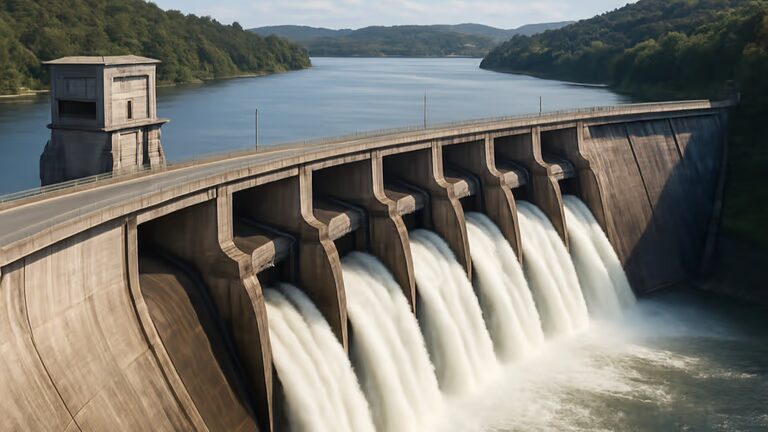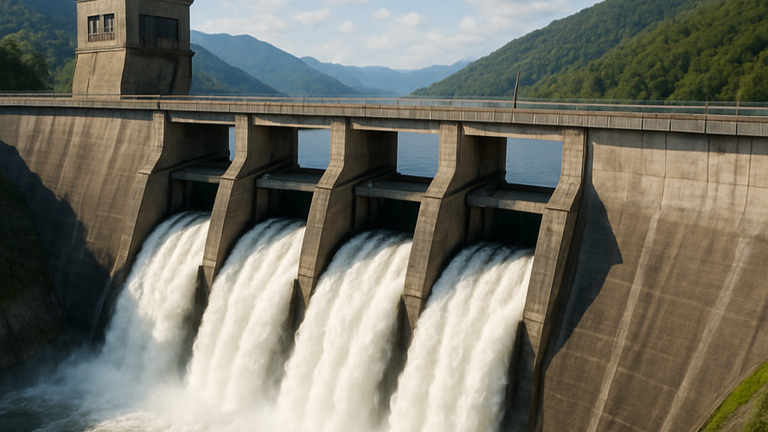
In the high mountains of Tibet, at a strategic bend of the Yarlung Zangbo River—known downstream in India as the Brahmaputra—China has launched a bold, controversial hydropower project. The Medog Hydropower Station, also called the Yarlung Zangbo Mega-Dam, is poised to become the largest hydropower facility in the world. While the project’s scale and ambition are jaw-dropping, so too are the geopolitical, environmental, and humanitarian concerns it raises, especially for India and neighbouring countries.
ALSO READ- Vice President Jagdeep Dhankhar Resigns—Explained
The Mammoth Scale of the Project-
The Medog Dam is no ordinary infrastructure undertaking. With an expected installed capacity exceeding 70 GW, it would generate nearly 300 billion kilowatt-hours of electricity annually—almost three times the output of China’s own Three Gorges Dam, currently the largest of its kind globally. The dam, costing a staggering US$167.8 billion, is slated for completion around 2033.
Located in the Nyingchi Prefecture of Tibet, close to the “Great Bend” of the river before it enters Arunachal Pradesh in India, the project harnesses the immense hydro potential of an elevation drop of over 2,000 meters across a 200-kilometre stretch. To get this, China plans a cascade of five dams, supported by underground powerhouses, tunnels, and diversion channels—so that technology is designed not only for efficiency but also for stealth, avoiding detection by radar and satellites.
Why This Matters: More Than Just Power-
From a purely engineering standpoint, this mega-dam is a marvel. But it’s not being constructed in isolation. It is a critical part of China’s long-term energy and water strategy, designed to bolster energy security and meet rising domestic power demands with clean energy.
Meanwhile, critics argue that this is just not about electricity. The project allows China the capability to manipulate river flow, store water during wet seasons, and divert it during dry months. Through diversion tunnels, China can potentially channel water northward to drought-prone regions, changing natural river dynamics permanently.
This raises serious alarms in India, Bangladesh, and even among the Tibetan communities, many of whom could face displacement, loss of livelihood, or environmental damage.
The India Angle: Uneasy Downstream Neighbour-
India is watching this development with growing unease. The Brahmaputra is not just a river—it’s a lifeline for the northeastern states, particularly Arunachal Pradesh and Assam, sustaining millions through agriculture, fisheries, and transport.
By constructing such a massive dam so close to its border, China gains first-mover advantage in regulating the river’s flow. This could potentially affect seasonal floods, agricultural cycles, and biodiversity downstream. Also, in the absence of a formal water-sharing treaty between India and China, the project sharpens fears of unilateral control and water weaponisation.
The dam is also a strategic lever in the broader India-China rivalry. It comes at a time of heightened border tensions and increasing geopolitical rivalry, making the project as much a security concern as an environmental one.

A Human and Environmental Cost-
The construction of the dam also brings concerns over human displacement, especially among Tibetan minorities living in the area. While the Three Gorges Dam displaced around 1.3 million people, the human cost of the Medog Dam remains TBD (to be determined). However, the risk to communities and culture in the fragile Tibetan plateau is significant.
Environmental experts fear the potential consequences of interrupting the natural sediment flow, affecting aquatic ecosystems, altering river temperature, and even increasing the chances of seismic activity due to the dam’s location in an earthquake-prone zone.

Technical Sophistication: Hidden Might-
What makes this project particularly concerning from a strategic standpoint is its technical sophistication. The dam complex includes underground powerhouses, helping to conceal infrastructure from aerial surveillance. Its cascade storage system allows better timing and control over the river’s water release, making it easier to manage seasonal variations but harder for downstream nations to predict or prepare for sudden releases or shortages.
In addition, diversion tunnels serve a dual purpose—satisfying water needs in China’s arid north and exerting political pressure on nations dependent on the river’s natural flow.
What India Can—and Should—Do-
Faced with this growing challenge, India has several strategic options. First, it must fast-track its own hydropower projects, especially the Upper Siang Dam on the Brahmaputra, to assert flow rights and energy generation claims. Second, India should push for a Brahmaputra Water Commission involving China and Bangladesh, creating a formal trilateral framework to ensure transparency, data sharing, and cooperation.
India must also scale up space-based surveillance using satellites to monitor river flow, dam construction progress, and any diversionary activity. Additionally, forums like the QUAD and G20 can be used to internationalise the issue of transboundary water ethics, which will ensure that China’s actions face global scrutiny.
A Call for Global Accountability-
The international community also has a role to play. Pressure must be applied on China to respect environmental norms, maintain free-flow river ethics, and practice transparency in large-scale water infrastructure projects. Organisations like the UN and international NGOs should raise concerns around displacement, cultural erosion, and ecological imbalance, especially in fragile regions like Tibet.
By failing to act now, the world risks setting a dangerous precedent where upstream countries wield unchecked power over shared natural resources.
Conclusion: A River Divides and Connects-
Rivers, by nature, connect lands, people, and ecosystems. Yet, when politics, power, and control come into play, they can just as easily become tools of division. China’s Medog Mega-Dam project on the Brahmaputra is a defining moment in Asia’s hydro-geopolitical landscape. While it promises to push the boundaries of engineering and green energy, it also threatens to unleash geopolitical tensions, environmental degradation, and human displacement.
For India, it is a wake-up call—not just to secure its share of the river’s bounty but to lead a balanced, ethical, and cooperative model of water governance in a world where control over natural resources increasingly defines power.
